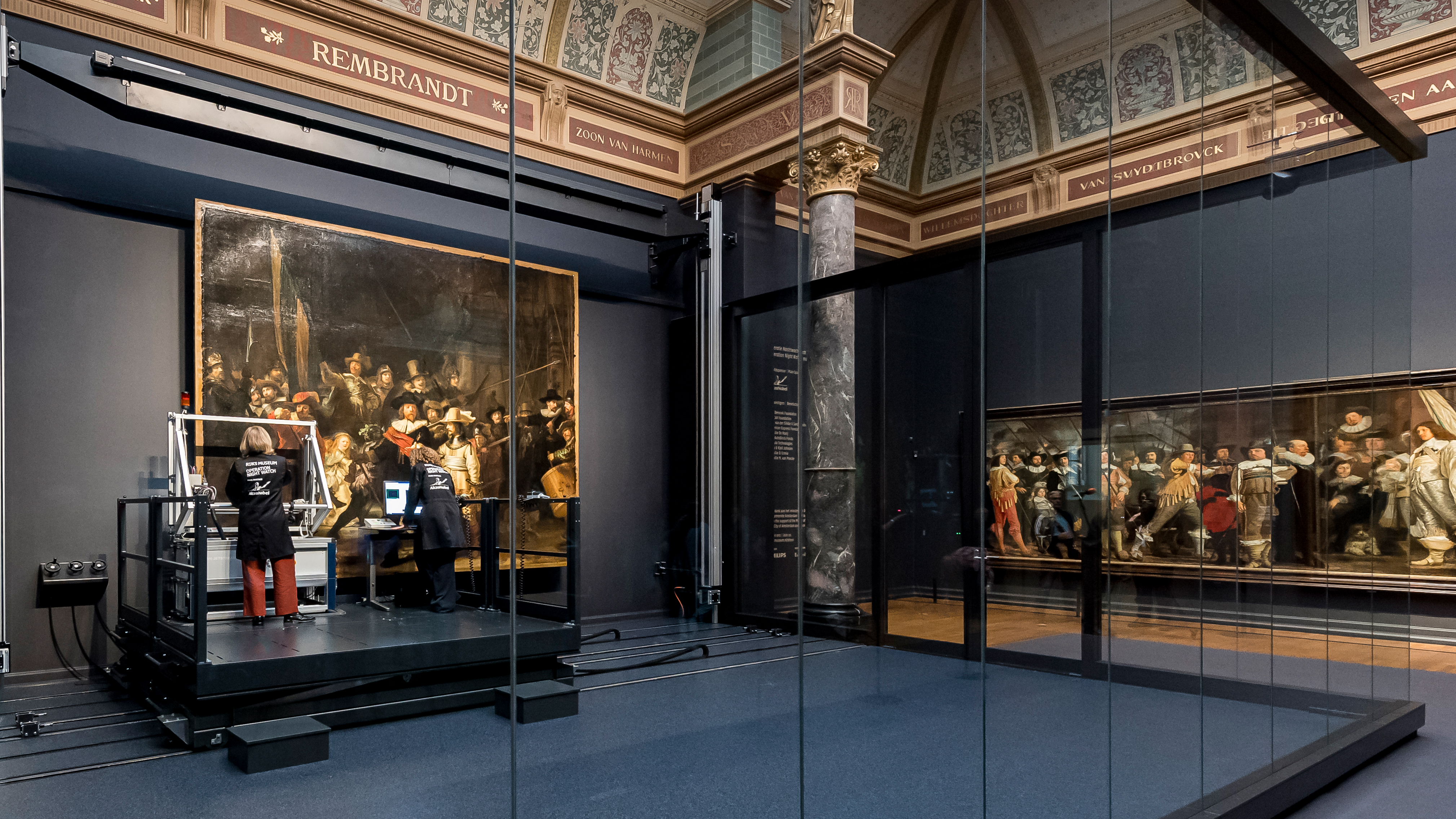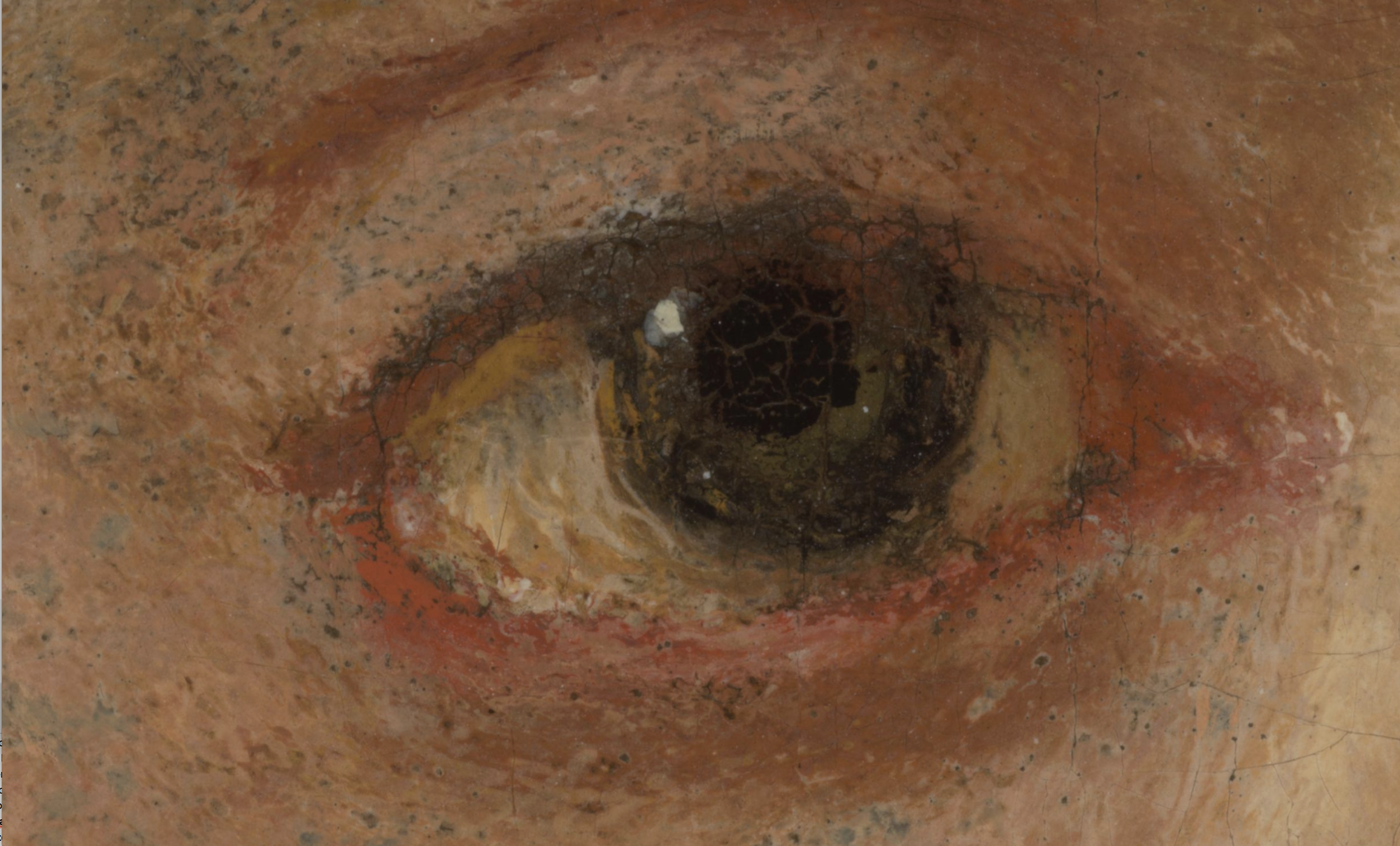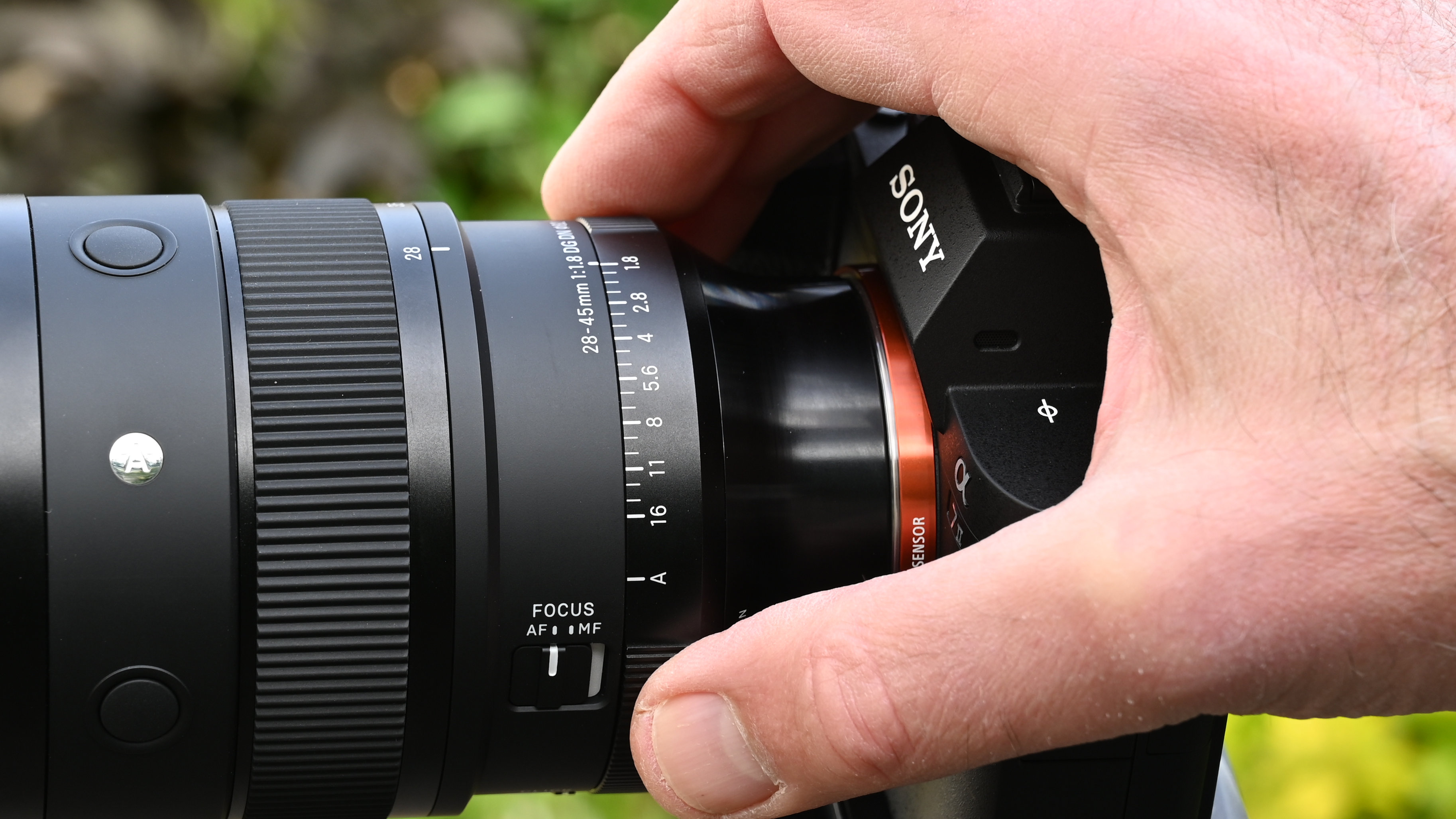Amazing 44,804 megapixel photograph shows Rembrandt masterpiece as it's never been seen before
528-exposure composite of Rembrandt's The Night Watch lets you zoom into every brushstroke

A highly-detailed 44.8 gigapixel image of one of the world's most famous paintings has just been released for everyone to see. The Rijksmuseum in Amsterdam is one of the best-known art galleries in the world, and the jewel in in its collection is The Night Watch by Rembrandt.
The Rijksmuseum’s imaging team made the photograph of the masterpiece from a total of 528 exposures. The 24 rows of 22 pictures were stitched together digitally creating a final image made up of 44,804,687,500 pixels, and the distance between each pixel is 20 micrometres (0.02 mm). This enables the scientists, and members of the public, to study the painting in microscopic detail from anywhere in the world. Every brushstroke can be inspected - and particles of pigment can be clearly seen. The image will also be used to accurately track any future deterioration in the painting.
Measuring 3.6 x 4.4m (12 × 14 feet), Rembrandt painted The Night Watch in 1642. The commissioned piece is so big, that the main figures are practically lifesize. The original title of the oil painting was "Officers and Men of the Company of Captain Frans Banning Cocq and Lieutenant Wilhelm van Ruytenburgh" – but became known as The Night Watch at a later date, even though the scene is not actually set after dark.
You can view the image for yourself using this link.
The photograph forms part of conservation work on the painting, which has been interrupted due to the Covid-19 lockdown. Work on the painting which is housed in a protective glass chamber, is set to resume today.
Read more
The world's smallest camera is size of grain of sand
The world's biggest lens is a whopper
This is what photographs from a $57,000 camera look like
The best camera deals, reviews, product advice, and unmissable photography news, direct to your inbox!

Chris George has worked on Digital Camera World since its launch in 2017. He has been writing about photography, mobile phones, video making and technology for over 30 years – and has edited numerous magazines including PhotoPlus, N-Photo, Digital Camera, Video Camera, and Professional Photography.
His first serious camera was the iconic Olympus OM10, with which he won the title of Young Photographer of the Year - long before the advent of autofocus and memory cards. Today he uses a Sony A7 IV, alongside his old Nikon D800 and his iPhone 15 Pro Max.
He is the author of a number of books including The Book of Digital Photography, which has been translated into a dozen different languages.
In addition to his expertise in photography and videomaking, he has written about technology for countless publications and websites including The Sunday Times Magazine, The Daily Telegraph, What Cellphone, T3 and Techradar.

